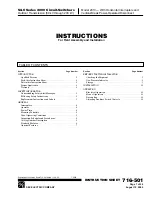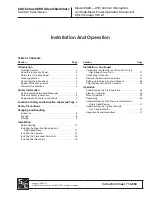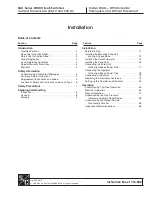
Step 4
Prepare the other end of the grounding wire and connect it to the facility ground.
Starting the Switch
You start the switch by connecting it to its dedicated power source. If you need
n
+1 redundancy, you must
connect each of the power supplies to one or two power sources. If you need
n
+
n
redundancy, you must
connect each power supply in a switch to a different power source.
Before you begin
• The switch must be installed and secured to a rack or cabinet.
• The switch must be adequately grounded.
• The rack must be close enough to the dedicated power source so that you can connect the switch to the
power source by using a designated power cables.
• You have the designated power cables for the power supplies that you are connecting to the dedicated
power sources.
Depending on the outlet receptacle on your AC power distribution unit, you might
need an optional jumper power cord to connect the switch to your outlet receptacle.
Note
• The switch is not connected to the network (this includes any management or interface connections).
Step 1
For the AC power supply, do the following:
a) Using the recommended AC power cable for your country or region, connect one end to the AC power supply.
b) Connect the other end of the power cable to the AC power source.
Step 2
Listen for the fans; they should begin operating when the power supply is powered.
Step 3
After initialization, the switch chassis Status (STS) LED is green.
Step 4
Verify that the system software has booted and the switch has initialized without error messages.
Note
A setup utility automatically launches the first time that you access the switch and guides you through the basic
configuration. For instructions on how to configure the switch and check module connectivity, see the appropriate Cisco
Nexus 9000 configuration guide.
Cisco Nexus 9358GY-FXP NX-OS Mode Switch Hardware Installation Guide
14
Installing the Switch Chassis
Starting the Switch















































